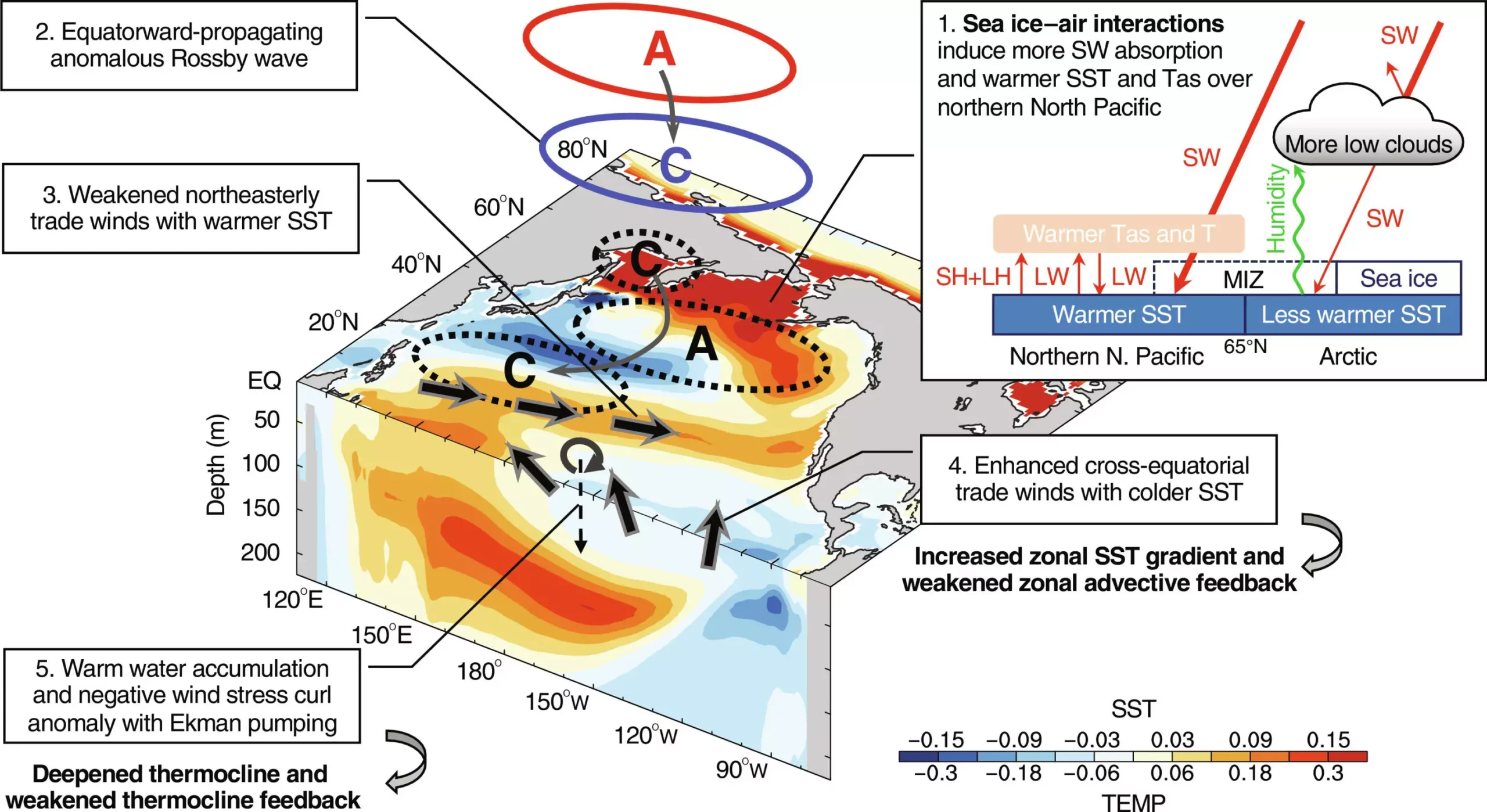El Niño, a climate pattern characterized by warmer waters in the eastern Pacific, has been responsible for bringing record heat and heavy precipitation across the world in recent years. A new study published in Science Advances has found that these events may become even stronger due to the melting Arctic sea ice. The study, conducted by researchers at the University at Albany and Nanjing University of Information Science and Technology, highlights the potential impact of Arctic sea ice on El Niño events.
The researchers utilized a combination of climate model simulations and observational data to analyze the relationship between Arctic sea ice and El Niño events. They discovered that the current interaction of Arctic sea ice with the atmosphere reduces the strength of El Niño events by up to 17% compared to when the interaction is removed. This is significant because the amount of sea ice that survives the Arctic summer has declined by 12.2% per decade since the late 1970s, and projections indicate that the region could experience its first ice-free summer by 2040.
To reach their findings, the researchers performed and analyzed two global climate model simulations for 500 years. One simulation included sea ice-air interactions in the Arctic, while the other did not. By comparing the results of the two simulations, the researchers found that Arctic sea ice-air interactions weaken El Niño-related variations in the tropical Pacific Ocean by about 12 to 17%. This highlights the crucial role of sea ice-air interactions in regulating El Niño activity over the tropical Pacific.
The study also observed historical changes in El Niño events from 1921-1960, a period with strong sea ice-air interactions, to 1971-2000, a period with weak interactions. These changes were consistent with the model results, further emphasizing the impact of Arctic sea ice on El Niño events. This study is part of a series of research papers focusing on changes in Arctic climate, highlighting the far-reaching climate impacts of shrinking Arctic sea ice.
The study underscores the importance of considering the impact of melting Arctic sea ice on El Niño events. With Arctic sea ice projected to decline rapidly in the coming decades, it is crucial to better understand the role of sea ice-air interactions in climate models. By incorporating these interactions more realistically, we can improve our ability to project and prepare for the potential impacts of El Niño in a warming future.



Leave a Reply